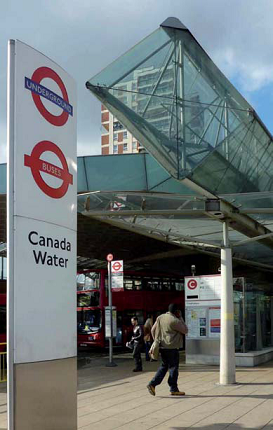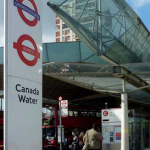Transport for London (TfL) has launched the new
best practice guidelines which aim to improve the
quality of multi-modal transport interchange
in London. The TfL Interchange Best Practice
Guidelines are a new and improved version of the
organisation’s 2001 guide to supporting the
better design and management transport hubs,
which requires close collaboration between
partners including the London Borough’s,
Department for Transport, Network Rail and TfL
Modes (Bus, Underground, Rail, Walk and Cycle).

The guidelines are for those who are involved in
the planning, design and operation of transport
interchange in order to improve the quality and
efficiency of multi-modal interchange in London.
Updated to reflect new policy and industry
standards the guidelines support the current
Mayor of London’s Transport Strategy.
The new guidelines provide a benchmark and
aspiration for world class interchange by developing
a consistent approach to multi-modal
interchanges in London. The guidelines are based
on four interchange themes which should be
considered at transport hubs. The four themes
are:
- Efficiency: aims to provide a seamless experience for passengers, best practice interchange allows efficient movement of people and the public transport services they use as well as being simple to manage.
- Usability: accessible for all users and an environment which is safe, secure and comfortable. Not only are accidents and crime removed, but fear of these unpleasant
experiences is also removed, thereby increasing the usability of the interchange.
- Understanding: adopting principles of legible design creating places which are intuitive for all users, requiring minimal signage and well integrated with their surrounding urban context.
- Quality: providing a high quality interchange environment will improve all aspects of a user’s experience, whether its quality of design, configuration and facilities make it feel safe, give it a sense of place or make it a destination in
its own right creating social, economic and environmental value and instilling a sense of civic pride in those who use it.
The guidelines have been developed to encourage cooperation and coordination between those organisations involved in designing, implementing and managing London interchanges with the aim of providing improved passenger service and experience. The updated guidelines will help to inform future
projects similar to the recently delivered northern ticket hall at Kings Cross St Pancras (opened 29th November 2009). The revised guidelines have already had some influence on the EU-LINK panel’s recommendation to the Commission on
EU interchange best practice.
The new Interchange Best Practice Guidelines are now web-based (www.tfl.gov.uk/interchange) with a dedicated website which provides easy navigation and is supported by a quick reference guide, which is available in hard copy.
John McNulty, TfL Head of Interchange, said “Without these guidelines London would not have the benefit of a well planned, designed and delivered interchange such as Kings Cross St Pancras. As one of the world’s largest integrated transport providers with millions of daily customers, TfL is in a good position to provide guidance on interchange management”.
For more information visit www.tfl.gov.uk/interchange
E-mail: interchangeprogramme or emmaosborne@tfl.gov.uk
